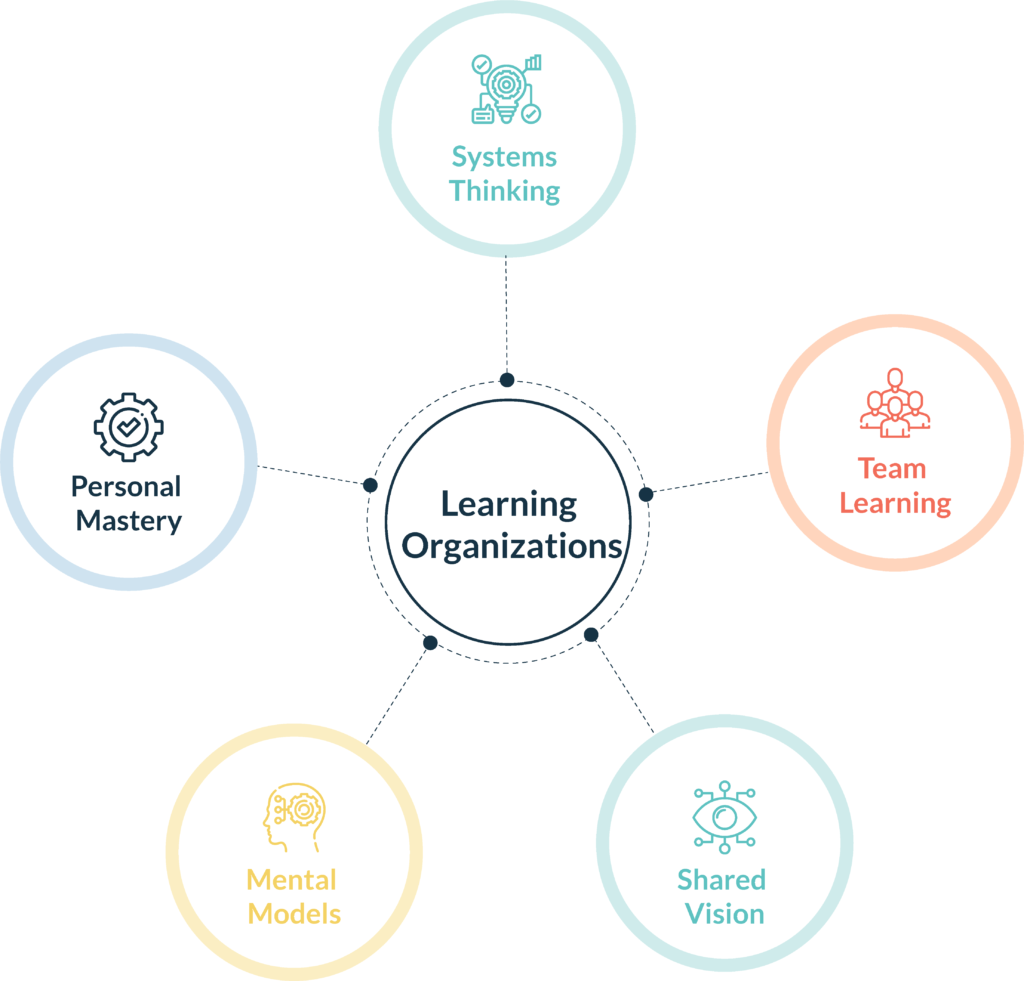Recent research showed that only 10% of companies have a well-cultivated learning culture properly aligned with the strategy and desired business outcomes. There are tireless efforts from companies to invest in their talent, strive to better themselves, and gain that unmet edge. However, learning mechanisms and processes might be stifled and their promising value impeded.
Peter Senge, defined “Learning Organizations” as “where people continually expand their capacity to create the results they truly desire, where new and expansive patterns of thinking are nurtured, where collective aspiration is set free, and where people are continually learning how to learn together.”
To achieve these ends, Senge suggested the use of these five components “component technologies”:
The 5 Components of a Learning Organization
These components can serve as a lead catalyst in any organization, and traits that gradually need development, sharing, and implementation. For this to be a meaningful goal, one must understand it first.
1. System Thinking
This promotes the idea that businesses and employees are systems; thus, every component affects the other elements of the set. It recommends enabling collaborative learning culture to stimulate idea exchange regardless of position in which it yields an improved experience.
2. Personal Mastery
Personal mastery promotes that having a lifelong learning mindset is the required stimuli in the corporate world. It means constantly embracing, valuing, and understanding the importance of growth and learning.
3. Mental Models
Mental models promote recognizing the “bigger picture” and how to reach or serve the “greater good” of the company. It means encouraging employees to test, assess and evaluate ideas openly. This learning experience will spur new concepts and approaches to face challenges.
4. Shared Vision
Shared vision promotes empowering forward-thinking individuals who are committed to the company’s overall goals, values, and mission. It means uplifting employees and enabling them to work collectively towards a larger purpose.
5. Team Learning
This promotes sharing knowledge mantra for a more effective learning experience. Such experience would resolute if they believe that the group’s combined intelligence is greater than the intelligence of any single individual.
Sounds idyllic? Absolutely. Desirable? Without a question.
Is it a myth? No. However, this needs enormous and concrete changes in working styles, where the potential of implementing and improving the “learning organization” exists.
At Lumofy, we believe that learning organizations don’t exist overnight. It is a meandering and systematic practice that requires experimentation, assessment, and monitoring. They translate the needed knowledge into new ways of behaving and ensure it occurs by integrating them into the fabric of the organization’s daily operations.
“By their very nature, organizations that have a learning culture are on a continuous-improvement path. Developing people is simply how they operate. It’s an integral part of daily processes. That culture is how you do things as a firm, and as an organization. It’s how you think. And that drives the type of impact you see. You have better market share, increased retention, and employees who want to be there. You have a better opportunity to impact the market and the issues that are top of mind for your clients because you focus on bringing the best of the organization to those clients. Leveraging the full power of the organization comes about through optimizing a culture of learning and development.”
—Renee Romulus, Booz Allen Hamilton.




















